First, on Lyndon's suggestion, we have a trio of photos depicting Chernobyl, the Soviet exodus from Afghanistan, and bread lines. In Lyndon's honor, the bread line photo was supposedly taken in Chisinau:

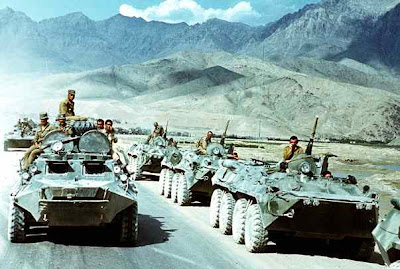
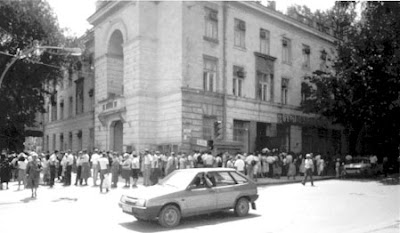
Next, recognizing the importance that nationalist mobilization and protests played in bringing down the Soviet system, we have a photo of the human chain across the Baltics in 1989, followed by one of the riots in Yerevan in 1988.


Next, there are the many notable images surrounding the August 1991 coup. The first is the memorable image of the coup plotters, visibly shaken (and shaking) appearing on television:
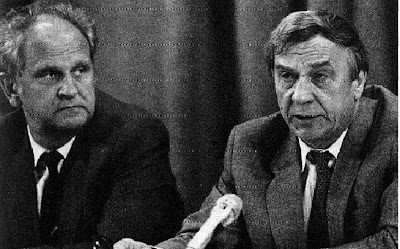
At the barricades in Moscow and St. Petersburg:
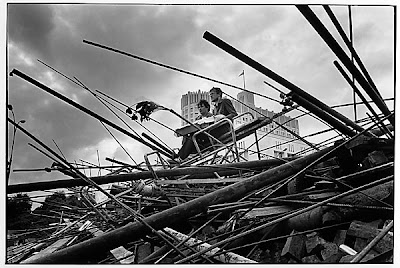
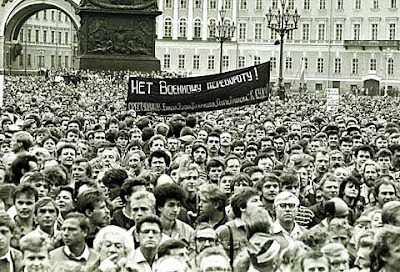
Then, of course, we have the famous photos of Yeltsin at the White House:
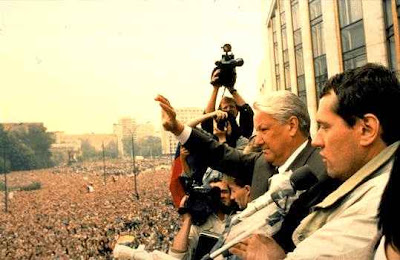

This one was sent to me by Andy at Siberian Light:

The triumphant toppling of Dzerzhinsky's statue in front of the Lubyanka (which, as it turns out, had a little help from a crane from the U.S. Embassy):

And of course, there are the the somewhat sad images of Gorbachev's return to Moscow:
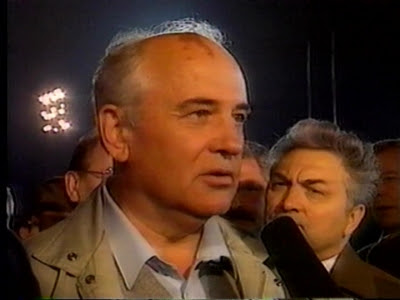
Soon after it was apparent that there was a new man calling the shots in Moscow:

And eventually it was that man who met with the leaders of Ukraine and Belarus in this villa at Belovezh to formally dissolve the Soviet Union:

...All of which led to the Soviet hammer and sickle being lowerd from the Kremlin for the last time on December 25, 1991:
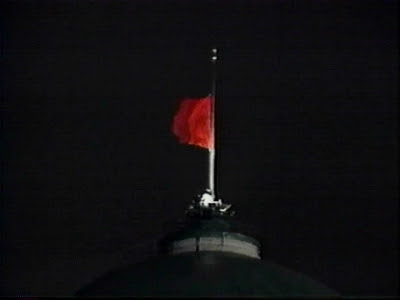
I still don't think I could pick just one that truly encapsulates "the collapse," though I think the Baltic chain is my sentimental favorite.
And in honor of the democratic ideals of that time, I suppose we should have a little online poll: which image do you think best captures the collapse of the Soviet Union?

3 comments:
R, well done! The bread-line photo is indeed from Chisinau! That building is right on the main square, it's now a shopping center called Gemenii (though it was recently renovated and may have had a name change), but in '99 people still referred to it as "Lumea Copiilor" - "Detskii Mir" - of which I think every major Soviet city had one. There's also now a McDonald's housed in the building, fronting onto the main street, which has also been renamed, from Lenina (shocker, I know) to Stefan cel Mare.
Presumably at the time of this photo, the building was "Detskii Mir." The idea that there could be food shortages in Moldova, of all places, is insane. Anyway, thanks for compiling this collection, I hope it didn't take too much time.
As for picking which one of these best encapsulates the breakup, I would rather not pick any individual photo of the ones you found - they're all good - but since, in a democracy, we often have to choose between two or more imperfect options, I'll go with the one from Palace Square in Piter. Call it a sentimental favorite for me, since I rode my bike on that square as a kid in the '80s and attended a Yeltsin rally there in '96. Thanks again for doing this.
I think "Yeltsin adressing on the tank" is my favourite. I remember those times from a loudspeaker in german in a beach resort in southern Turkey. German tourists were visibly shaken from the news and my father had to ask to a nearby sunbather to translate it to English for us...
I vote for the flag one. What I find amazing about the transition depicted here is that the transition not only encapsulated the collapse of an economic system and a political system, it led to the dissolution of a major political entity. Flags are tremendously symbolic (maybe here in the US more than in other places- I don't know) and to me (an outsider to the situation, obviously) this picture represents an important victory in what I think is an ongoing battle between universal/ideological and nationalist bases for the formation and organization of a polity.
Post a Comment